
Sanaaya Kurup took a journey to Nagaland. She stayed in a remote village, Thanamir and climbed the highest peak of Nagaland, Mt Saramati. Her friend, Arjun accompanied her. This is her story in her own words.
Subscribe to Trek Library and get premium content, free.
I didn't know about Mt Saramati or about Nagaland at all. I have a college friend, Ramya, who works in Nagaland. She works closely with the local community on conservation. She is living with a Naga family based in Thanamir which is the base camp village for Mt Saramati.
Ramya said - ‘you come here, you will like living with locals and this kind of experience, so you come whenever you want, my family is very happy to host you’. She also mentioned that Mt Saramati is in my backyard. I googled it. 12,500 feet high! I thought, I've done Markha Valley trek, that's 17000 feet, I could do this.
Plan was made in December 2022. Ramya told me It takes about two days to reach that village itself and that March / April is a good time to come because of rhododendron season.

Where did you find shared cabs for Pungro? Are they easily available?
We had to book them in advance and it's booked by seat numbers. You book seat number one, two, three like that. Window seats are the best. If you're facing an issue or there are children in your gadi who are puking a lot, window seat helps.
You can take a helicopter to reach Pungro. But it only runs on Wednesdays and just 5 kgs of luggage allowed. You will need to send your luggage in a taxi anyway. So suffer and go in a Sumo! Anar Travels: 7005341920
Nagaland state transport is close to zero. It's very difficult to get around. They have these regional taxis, which are cheap. So this 15 hour journey was about 1,300/-. And the helicopter I heard was 2250/-. Pungro is a small town on top of a mountain. There is a guest house where you can stay. It's the biggest town in that remote area but it's small.
Nothing works in Nagaland on Sunday. They all have church on Sunday. No transport, no regional taxis. You need to plan transport accordingly.
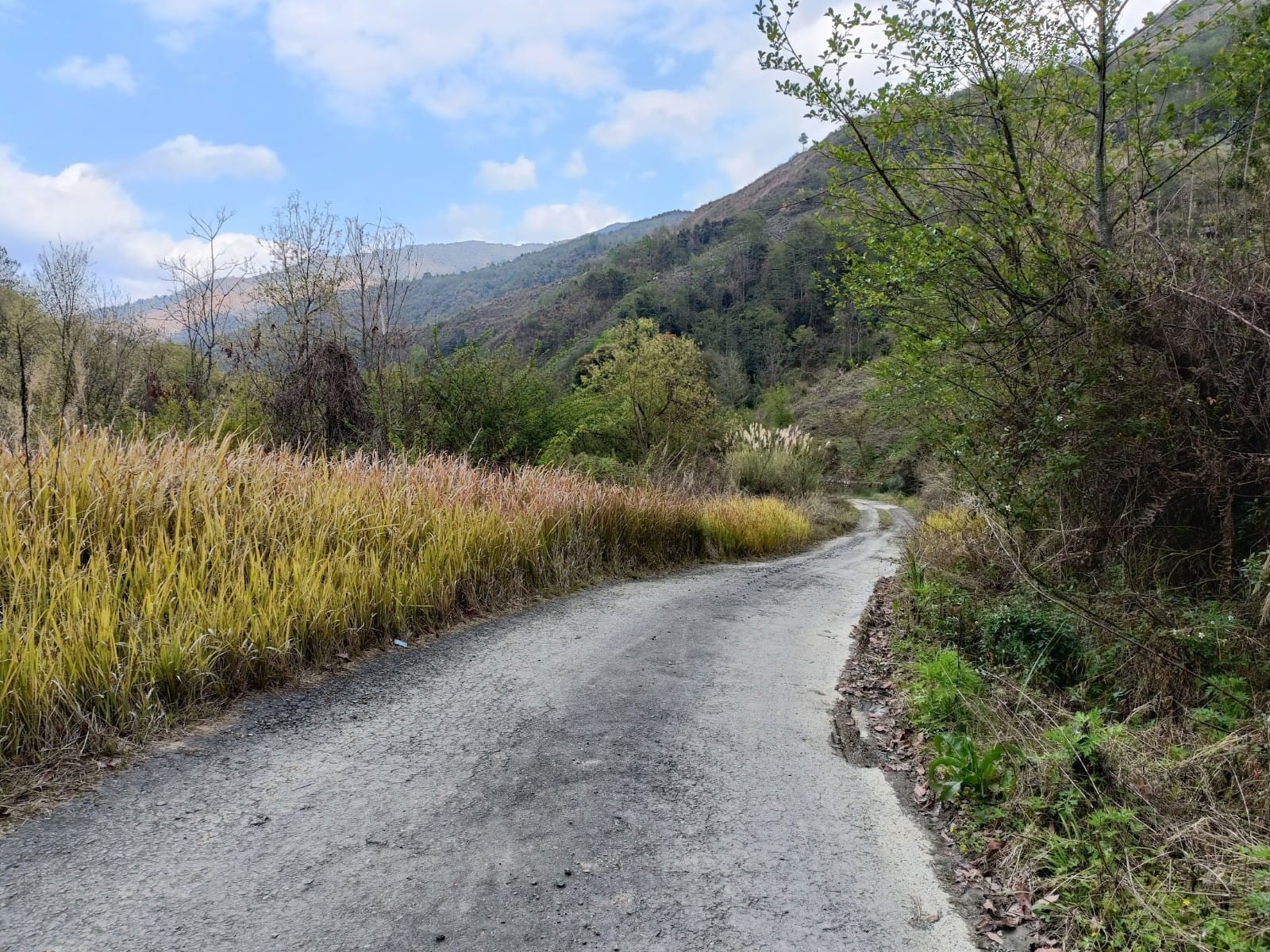
Finally you reached Thanamir. What is it like?
The minute you reach Thanamir it's like you forget that you had gone through torture to reach there. It's that nice. It's a very quaint pretty village on top of a mountain. You can't see Saramati from there. It’s covered by these other two huge mountains. There are about 150 households.There's a church. They're all Christians. Lots of babies and old people. Few kirana shops.
The people are really simple and the kids are scared of us because we look different. So they won't smile back or like laugh at you like they do in Himachal. They just stare. In shock.
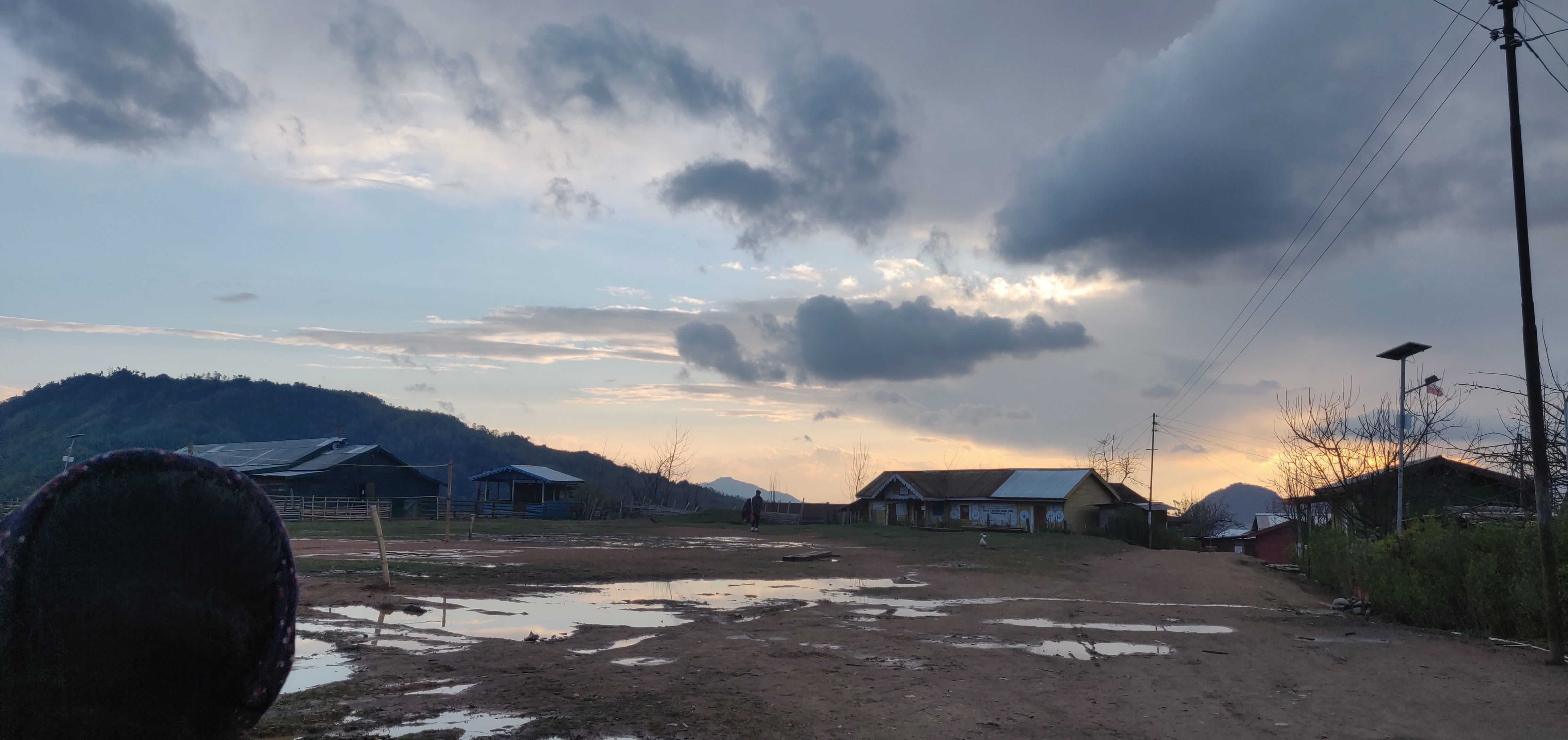
The region is the traditional home of the Yimkhiung Naga tribe.
Language can be difficult in Thanamir because it is so remote. But you can get by with hand gestures. Mostly in Nagaland they talk a language called Nagamese, which is a mix of Bengali Assamese. But they also have their own tribal language. The one in Thanamir is called Chirr. There are 17 recognised Naga tribes each with their distinct languages and dialects. Nagamese is their common language.
Can you describe the living facilities?
The houses there are generally wooden. There will be one common living room area which will 100% have a fire pit. That's where they cook. They'll be a two kettles on that fire pit. One filled with black tea and the other with hot water. They constantly drink black tea.
They don't have like gas or grinders or anything, it's not fancy, they do everything by hand.
Toilet made of wood on the outside of the house. One for bath and washing clothes and the other for pooping. We had to carry buckets to go. They had a big blue drum of water.
Do they put anything else in the tea?
Nothing. They usually don't drink milk and prefer milk powder.
We saw like a single cow in the whole two weeks.
Thanamir does have a guest house for trekkers for Saramati. If you stay there they arrange for guides, permissions etc.
Let’s get into the planning and execution of the trek.
Sunday, we all went to church and did some time pass in the village, walked around. Some bird watching on Monday. Tuesday, we went for the trek. The locals kept saying - you can do Sarmati in two days. Which we thought was insane.
So we said, three days makes sense. The family we stayed with, one of their sons came with us as our guide and the other one was provided by the village council. Two guides are mandatory. It's a rule.
Ration, you have to take yourself. There's a shop where you buy rice, dal for yourself and the crew. We took about 8 kgs of rice. The locals have a much larger appetite than we do. Their plate will have a whole heap of rice on it. 02 kgs of Dal one and 1 and half kg of potatoes. Onions 1 kg.
After hearing these figures we figured we need a porter because we can't carry all this.
Guide charges are 700/- per day and 600/- per day for a porter.
There's 150/- per person registration cost.
There's a hut up at base camp which we used as shelter. You pay a flat 1,500/- doesn’t matter how many days you use it.
-sz0pe.jpg)
Subscribe to Trek Library and get premium content, free.
What time did you guys start climbing on Tuesday?
We started late because we weren’t doing the trek in two days, but three.
The way the locals do the trek is that they leave Thanamir for base camp on the first day which is around 12 kms. They spend the night there and reach summit the next day which is another 06 kms. But they trek all the way back to Thanamir on day 2. We know we didn’t want to do that.
You start in an open area, the path has lot of stairs to start with. 100-200 stairs in the start. Then you reach the entry point of the trek where you register with the community and sort out the permissions. After that, it's more like 90% covered through the forest.
Day 1 trek took about two hours 55 minutes. It's a trail through the forest. We reached a point in the mountain where we had to traverse down the valley in order to spend the night. You can't camp on the trail unless you want to be swept away by the winds.
My advice - if they ever tell you to do it in two days, please don't because you will either get AMS or you'll you'll have to turn back.
We took a good one kilometer detour from the actual trail. There was a huge rock under which these guys behind made a makeshift camp with tarps. They chopped wood. It was an open campsite and what they did was right in front of the sleeping area they cut four logs which were on fire throughout the night. So we didn't feel cold.
Even if the wind was blowing you are protected.
Correct. Even though it was a makeshift campsite I slept very well.
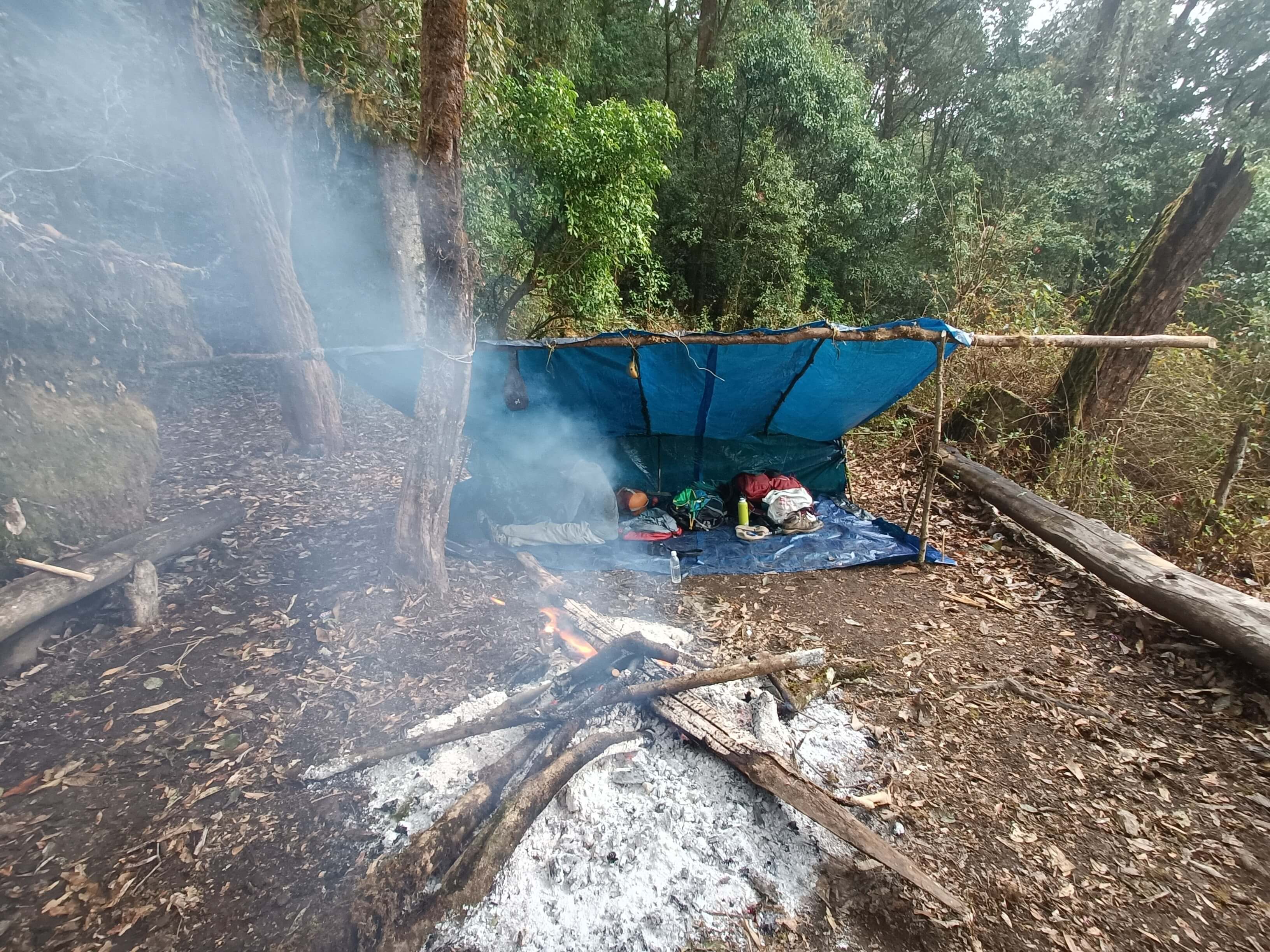
Aren’t you scared of snakes? Did they warn you that there might be any wildlife there?
There is a lot of wildlife there, but they said nothing will happen. We didn't hear anything in the night. Even if there was something, we were too tired. These guys are expert hunters. Their sense of hearing is really good. So you're in good hands. They know the terrain so well.
What did you sleep on?
We only carried our sleeping bag and a blue color tarp on top.
Dinner?
That was done by the guides. They basically cook, they set up the campsite, they cut wood. For the next three to four days, we only ate dal race and potato. And they did carry like this Naga chili with the coriander and they made chutney out of that.
My mouth is salivating.
One of the guides picked something from the forest, some wild greens and made some kickass chutney. Nobody knows what the ingredients are.

Man, so much can go wrong if you think about it. I doubt your mobile phone was working.
There are patches of service, not reliable.
So you spend the night in this makeshift camp. Next day, you walk your back up to the ridge and start walking towards base camp?
Yes, the next day we faced these two open rock faces. Anyone with vertigo, this trek is not for you! Big giant boulders you need to climb up so you need good upper body strength. Very similar to trekking in Sahyadri.
Once you scramble up the rock then there are like these parts where you get a 360 view of everything. There's nothing on either side of you.
Do you see Mt Saramati or are you still away from it?
You're supposed to see it on day one itself, but it rained a little and was cloudy. So we only got the view of the peak when we started from base camp.
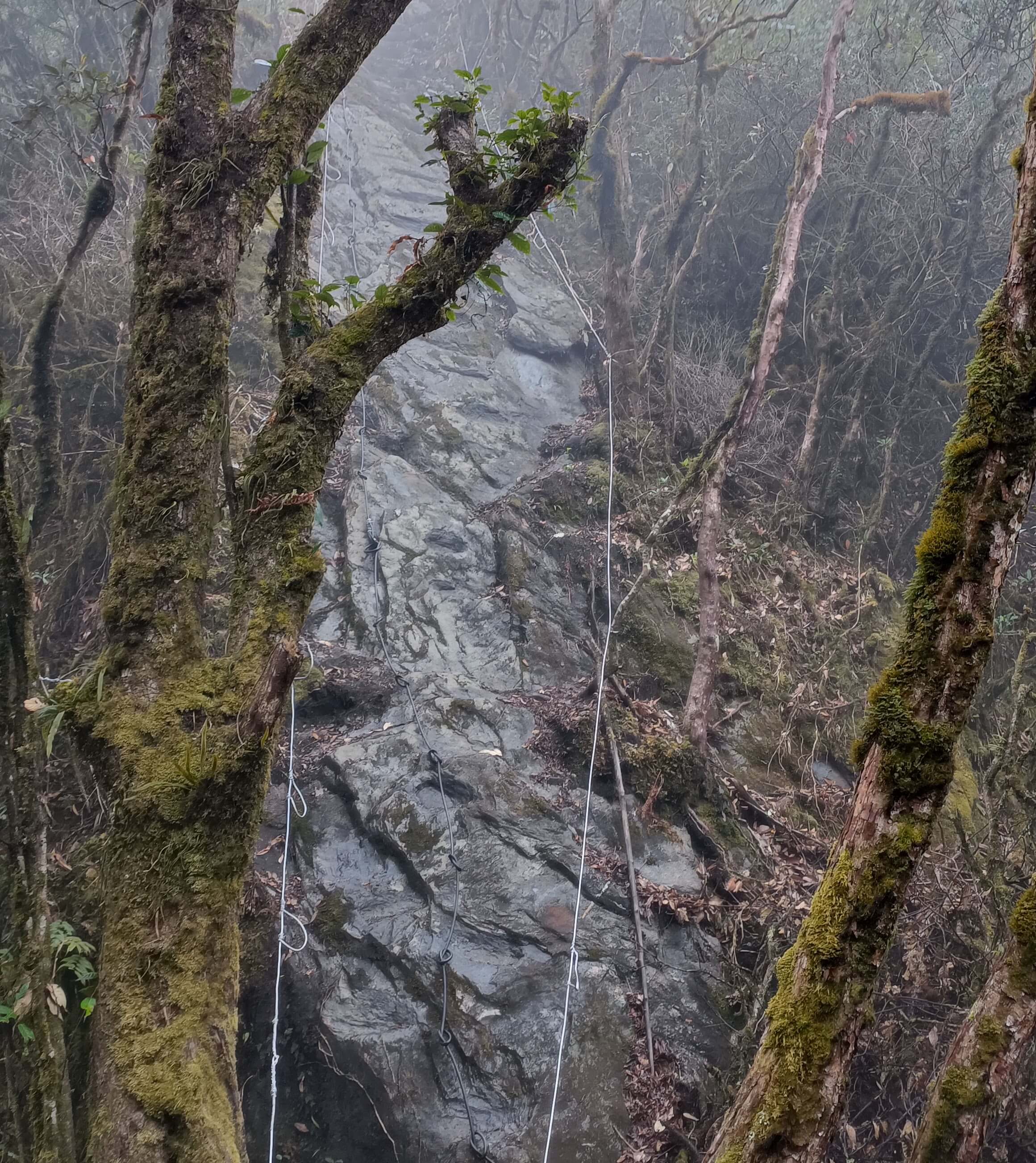
Please don't attempt this trek if you have never trekked before.
Subscribe to Trek Library and get premium content, free.
Tell me about base camp and hike to summit.
At basecamp there are two huts. One is for cooking and the other for sleeping. The cooking hut is occupied by the guides. The local church has built them and kept utensils for trekkers to use. People leave their extra ration in these huts for other to use. There's a tap for water which is connected to some water source.
The guide told us it's three hours from base camp to Saramati one way. We decided to add another day and spend the night at basecamp after summiting.
We didn't start early because we only had to do the summit and return to base camp.
The porter had never done Saramati before. He was actually a mason working in construction work. He came along to the summit too.
The summit was really really tiring. It's probably one of the toughest summits I’ve done. I had thought I have done Markha, this should be easy in comparison. But the ascent, the angles and the terrain made it very difficult.
The six kilometers on summit day was never ending. I was in shock. You're seeing the top, so close but you're not reaching there.
It was really windy at the top. I don't know how I reached and how I came back. It was really cold, windy and silent. Luckily, the weather cleared up and I could see Myanmar.
We didn’t see any trekkers going up or coming down. It's scary. It's something I've never experienced honestly. Like you get the whole mountain to yourself.
Check out Sanaaya's hike to the summit on Strava.
-pw39g.jpg)
Let's talk about your gear.
Complete wilderness man! Let's break down your gear.
I took my Osprey Ariel 65 Women’s backpacking pack. If you're a seasoned trekker, please invest in an Osprey. Life will become much easier for you. It is expensive. In India it sells around 30,000/- so it's not worth buying from here. Find an NRI friend to bring one for you.
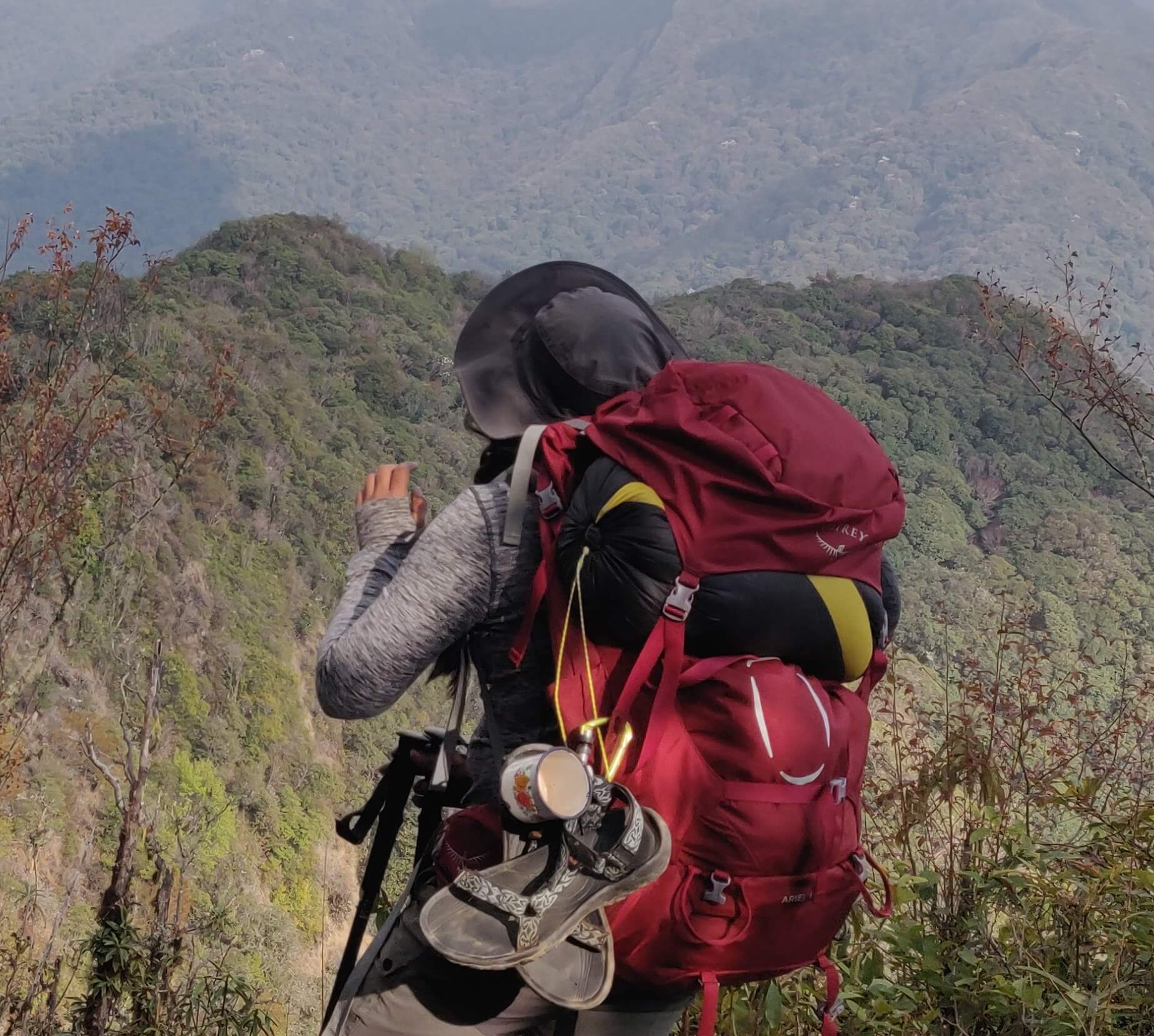
I carried two trekking poles which I feel without that I would have died. Your knees will thank you during the descent.
Good waterproof trekking shoes.
I had a hydration pack which was three liters. Again, invest in one if you can.
Sleeping bag. Mine is a Sierra Designs, Minus 10 wala. But my friend had a basic one. If you are carrying a lot of layers, you can afford to go easy with a sleeping bag.
Down jacket, else you will die. Two, layers below the down. Good woolen socks for the night.
A raincoat.
I carried only two trek pants and I used both because we did the trek in four days. Shirts, I carried three. One sweater, one pair of gloves. You need gloves for the summit day.
Something to cover your ears - a Beanie or Balaklava.
You need a cap because there are some open sections where It does get hot.
Take a yoga mat. I didn’t but should have. The first night in the hut, wind blew within the gaps of the wooden floor. Next night the guys found bamboo leaves and laid it on the floor.
I make granola at home so I carried a whole ziplock. But that got over before the trek!
One mistake we made is not carry enough snacks. We would have breakfast and then dinner. We didn’t have anything to eat while walking. No packed lunch either. That made the trek even more difficult. We had some dry fruits, but wasn't enough. Should have taken more.
On the trail there aren’t many water sources. You need to carry good enough amount of water. If you don't hydrate you will probably get AMS from the height gain.
You need to train properly before going. Do steps regularly. Running will help for endurance but you will need to do muscle training for this trek.
I carried Diamox but didn’t feel the need to take it.
June / July is a good time to go because wildflowers come up, which paint the mountain. That's what the hosts were telling us.
There was this photograph I saw you posted of meat on ropes that made me reach out to you. Tell me about the culture of Nagaland.
In Nagaland everyone smokes their meat. Their food is very simple. They have smoked pork as their main curry, they have something called axone, which is fermented soybean. A lot of protein, you should see these guys - they're ripped. All of them have abs. Their legs have no fat. Their calves are bulging, quads are cut. Old people have biceps. Dude, shame on us.
They also eat a lot of carbs. Mountain of rice.
Bamboo shoots are used a lot. It has a peculiar smell.
Then they eat greens which they go to the forest and pick it out. I had no idea what I was eating but it was yummy. They steam it. Most of the greens are unknown to us. They also eat a lot of mushrooms from the forest.
They're really really friendly. Very sweet folks. And oh my God hospitable, more than my own family. They're not very well to do, right? But they will go out of the way to make you feel at home and cater to your needs. The first day we reached, they made fried chicken, chicken curry, smoked pork and a banana flower ki bhaji!
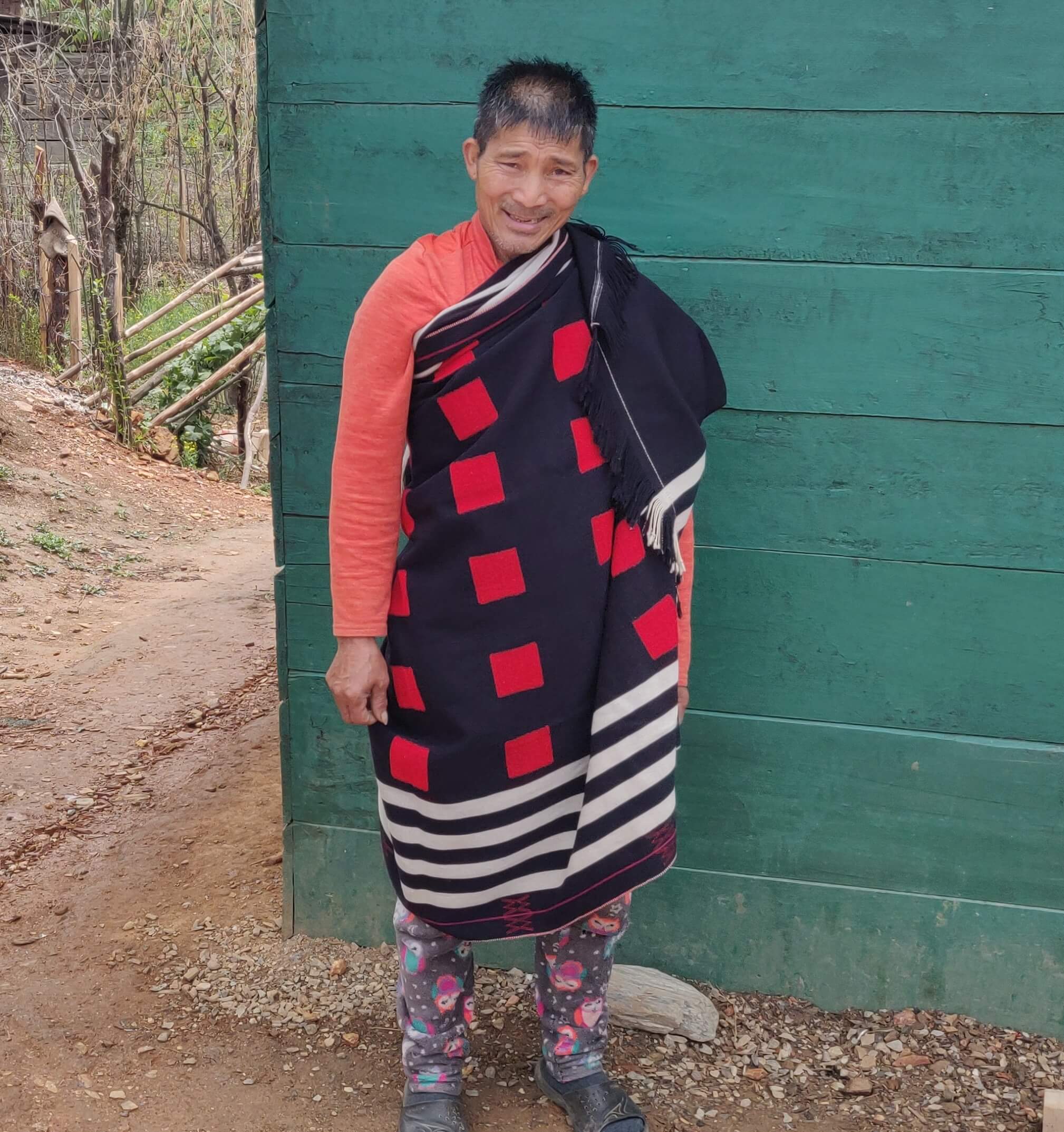
Akhil - Traveling to off-beat locations is cultural education at its best. Teaches us to be respectful of traditions others have been following for generations. Naga people have always been hunters and gatherers. What might be unusual for us is normal livelihood for them. Respect that.
They offer you tea all the time, they'll offer you hot water. People are scared to go to Nagaland. But things have changed. People are so helpful, in the city, in this village. You are not going to encounter any crooks there.
Vegetarians will need to suffice with dal, potatoes, greens and rice. You can carry Maggi and grains. I used to have non veg, I converted but I had to eat non veg there. Many places, there was no option. I didn't want to be a pain in anyone's ass, I can't eat this, can’t eat that.
Why do you prefer solo treks? How has it improved your life?
I go with my group, four to five people max. There's a lot of noise in bigger groups. There is always someone playing music on their Bluetooth speaker. It sounds stuck up but I value the silence when I'm trekking. That's why I'm trekking in the first place. To hear sounds that I don't hear in the city. To experience the sound of the birds, leaves crackling. I find it so much more fun planning things myself. Going into detail about the trail, elevation, distance, water sources. You're learning how to survive. When you go in the wilderness yourself, you are accountable for your actions.
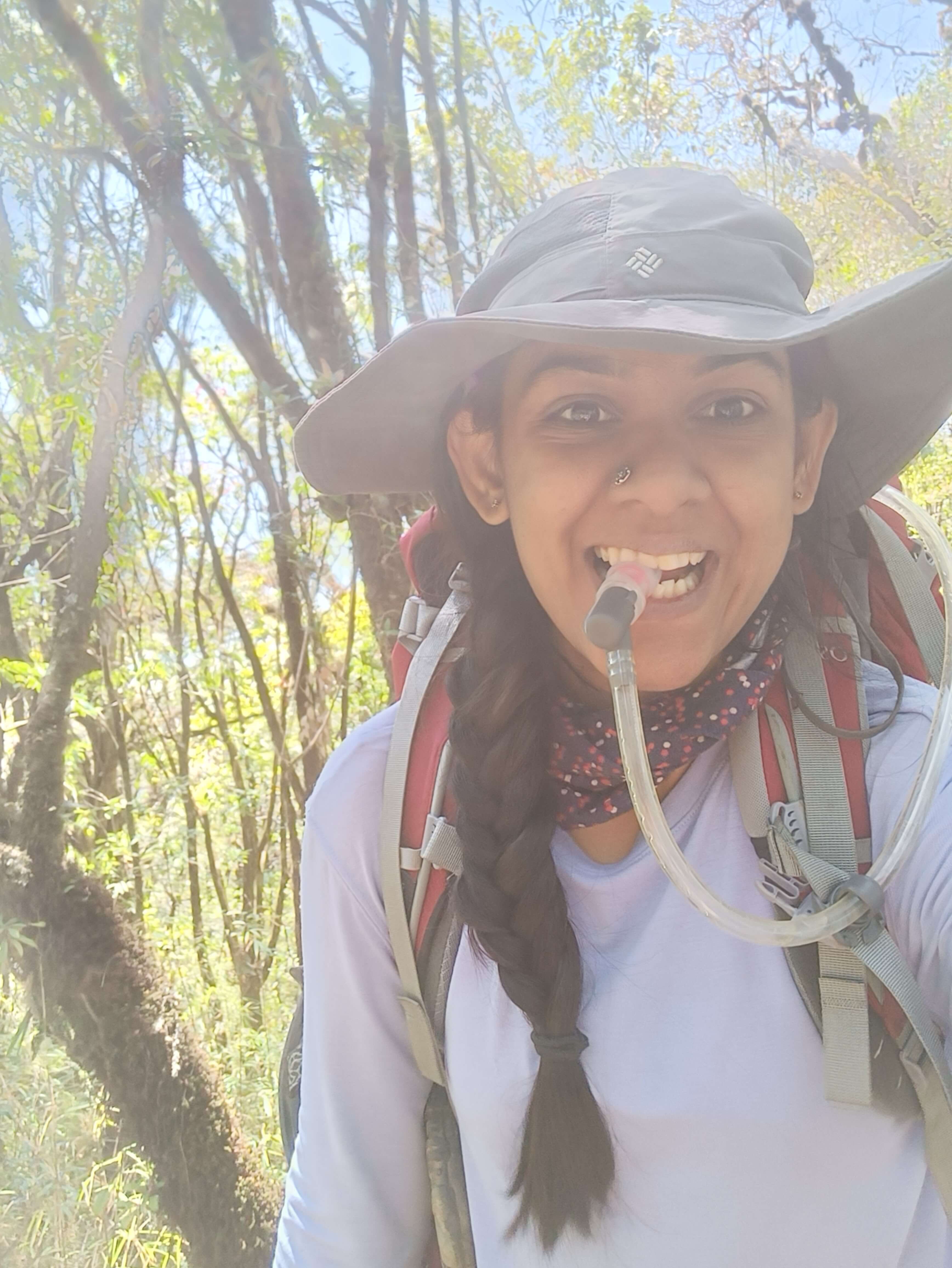
Thank you for taking the time to share your adventure with us Sanaaya. You represent the untamed spirit inside all of us. May you keep marching to your own drum...
Disclaimer: The above narration is observation of an individual and in no way meant to generalise or hurt anyone's sentiments.
Subscribe to Trek Library and get premium content, free.
